On the Use of Agile Optimization for Efficient Energy Consumption in Smart Cities’s Transportation and Mobility
Abstract
1. Introduction
2. Energy Requirements in Urban Logistics
3. Energy Consumption Optimization Problems in Smart Cities
3.1. Energy Consumption Optimization Problems
3.2. Sustainability and Smart Urban Mobility
4. Energy Consumption in Last-Mile Delivery
5. Agile Optimization
6. Problems Solved Using Agile Optimization
7. Conclusions
Author Contributions
Funding
Institutional Review Board Statement
Informed Consent Statement
Data Availability Statement
Conflicts of Interest
References
- Ahmad, T.; Zhang, D. A critical review of comparative global historical energy consumption and future demand: The story told so far. Energy Rep. 2020, 6, 1973–1991. [Google Scholar] [CrossRef]
- Guo, J.; Long, S.; Luo, W. Nonlinear effects of climate policy uncertainty and financial speculation on the global prices of oil and gas. Int. Rev. Financ. Anal. 2022, 83, 102286. [Google Scholar] [CrossRef]
- Chen, G.; Wu, X.; Guo, J.; Meng, J.; Li, C. Global overview for energy use of the world economy: Household-consumption-based accounting based on the world input-output database (WIOD). Energy Econ. 2019, 81, 835–847. [Google Scholar] [CrossRef]
- Jayaprakash, S.; Nagarajan, M.D.; Prado, R.P.d.; Subramanian, S.; Divakarachari, P.B. A Systematic Review of Energy Management Strategies for Resource Allocation in the Cloud: Clustering, Optimization and Machine Learning. Energies 2021, 14, 5322. [Google Scholar] [CrossRef]
- Bhatt, A.N.; Shrivastava, N. Application of Artificial Neural Network for Internal Combustion Engines: A State of the Art Review. Arch. Comput. Methods Eng. 2022, 29, 897–919. [Google Scholar] [CrossRef]
- Bektaş, T.; Ehmke, J.F.; Psaraftis, H.N.; Puchinger, J. The role of operational research in green freight transportation. Eur. J. Oper. Res. 2019, 274, 807–823. [Google Scholar] [CrossRef]
- Corlu, C.G.; de la Torre, R.; Serrano-Hernandez, A.; Juan, A.A.; Faulin, J. Optimizing Energy Consumption in Transportation: Literature Review, Insights, and Research Opportunities. Energies 2020, 13, 1115. [Google Scholar] [CrossRef]
- Psaraftis, H.N.; Kontovas, C.A. Speed models for energy-efficient maritime transportation: A taxonomy and survey. Transp. Res. Part C Emerg. Technol. 2013, 26, 331–351. [Google Scholar] [CrossRef]
- Casella, V.; Fernandez Valderrama, D.; Ferro, G.; Minciardi, R.; Paolucci, M.; Parodi, L.; Robba, M. Towards the Integration of Sustainable Transportation and Smart Grids: A Review on Electric Vehicles’ Management. Energies 2022, 15, 4020. [Google Scholar] [CrossRef]
- Wang, N.; Tang, G. A Review on Environmental Efficiency Evaluation of New Energy Vehicles Using Life Cycle Analysis. Sustainability 2022, 14, 3371. [Google Scholar] [CrossRef]
- Faulin, J.; Grasman, S.E.; Juan, A.A.; Hirsch, P. Sustainable Transportation: Concepts and Current Practices. In Sustainable Transportation and Smart Logistics; Elsevier: Amsterdam, The Netherlands, 2019; pp. 3–23. [Google Scholar]
- Chatti, W. Moving towards environmental sustainability: Information and communication technology (ICT), freight transport, and CO2 emissions. Heliyon 2021, 7, 08190. [Google Scholar] [CrossRef] [PubMed]
- Rashidi, K.; Cullinane, K. Evaluating the sustainability of national logistics performance using Data Envelopment Analysis. Transp. Policy 2019, 74, 35–46. [Google Scholar] [CrossRef]
- Newman, P.; Kenworthy, J. Sustainability and Cities: Overcoming Automobile Dependence; Island Press: New York, NY, USA, 1999; pp. 69–72. [Google Scholar]
- Pan, H.; Qi, L.; Zhang, Z.; Yan, J. Kinetic energy harvesting technologies for applications in land transportation: A comprehensive review. Appl. Energy 2021, 286, 116518. [Google Scholar] [CrossRef]
- Jin, L.; Zhang, B.; Zhang, L.; Yang, W. Nanogenerator as new energy technology for self-powered intelligent transportation system. Nano Energy 2019, 66, 104086. [Google Scholar] [CrossRef]
- Schislyaeva, E.; Evgrafova, I.; Butakova, N.; Mishalchenko, Y. The EU–Russia–Turkey energy triangle: Legal and economic conditions of gas transportation via the TurkStream pipeline. Transp. Res. Procedia 2022, 63, 1984–1990. [Google Scholar] [CrossRef]
- Wang, N.; Zhu, Y.; Yang, T. The impact of transportation infrastructure and industrial agglomeration on energy efficiency: Evidence from China’s industrial sectors. J. Clean. Prod. 2020, 244, 118708. [Google Scholar] [CrossRef]
- Kaza, N. Urban form and transportation energy consumption. Energy Policy 2020, 136, 111049. [Google Scholar] [CrossRef]
- Rodrigue, J.P. The Geography of Transport Systems, 5th ed.; Routledge: New York, NY, USA, 2020; pp. 285–330. [Google Scholar]
- IEA. Transportation: Improving the Sustainability of Passenger and Freight Transport; International Energy Egency: Paris, France, 2012; Available online: https://www.iea.org/ (accessed on 13 October 2022).
- U.S. Energy Information Administration (EIA). Energy Use for Transportation. 2022. Available online: https://www.eia.gov/ (accessed on 13 October 2022).
- Gorcun, O.F. Reduction of Energy Costs and Traffic Flow Rate in Urban Logistics Process. Energy Procedia 2017, 113, 82–89. [Google Scholar] [CrossRef]
- Wu, X.; Hu, X.; Yin, X.; Li, L.; Zeng, Z.; Pickert, V. Convex programming energy management and components sizing of a plug-in fuel cell urban logistics vehicle. J. Power Sources 2019, 423, 358–366. [Google Scholar] [CrossRef]
- Malladi, S.S.; Christensen, J.M.; Ramírez, D.; Larsen, A.; Pacino, D. Stochastic fleet mix optimization: Evaluating electromobility in urban logistics. Transp. Res. Part E Logist. Transp. Rev. 2022, 158, 102554. [Google Scholar] [CrossRef]
- Xu, B.; Xu, R. Assessing the role of environmental regulations in improving energy efficiency and reducing CO2 emissions: Evidence from the logistics industry. Environ. Impact Assess. Rev. 2022, 96, 106831. [Google Scholar] [CrossRef]
- Jones, J.; Genovese, A.; Tob-Ogu, A. Hydrogen vehicles in urban logistics: A total cost of ownership analysis and some policy implications. Renew. Sustain. Energy Rev. 2020, 119, 109595. [Google Scholar] [CrossRef]
- Rogelj, J.; Den Elzen, M.; Höhne, N.; Fransen, T.; Fekete, H.; Winkler, H.; Schaeffer, R.; Sha, F.; Riahi, K.; Meinshausen, M. Paris agreement climate proposals need a boost to keep warming well below 2 °C. Nature 2016, 534, 631–639. [Google Scholar] [CrossRef]
- Magazzino, C.; Mele, M.; Schneider, N. A new artificial neural networks algorithm to analyze the nexus among logistics performance, energy demand, and environmental degradation. Struct. Chang. Econ. Dyn. 2022, 60, 315–328. [Google Scholar] [CrossRef]
- Wang, D.; Li, J.; Tarasov, A. Technical and energy efficiency of urban logistics in China: Empirical analysis of 216 prefecture-level cities. Math. Probl. Eng. 2021, 2021, 6671890. [Google Scholar] [CrossRef]
- Turoń, K.; Kubik, A.; Chen, F. Operational aspects of electric vehicles from car-sharing systems. Energies 2019, 12, 4614. [Google Scholar] [CrossRef]
- Giffinger, R.; Fertner, C.; Kramar, H.; Meijers, E. City-ranking of European medium-sized cities. Cent. Reg. Sci. Vienna UT 2007, 9, 1–12. [Google Scholar]
- Komninos, N.; Kakderi, C.; Mora, L.; Panori, A.; Sefertzi, E. Towards high impact smart cities: A universal architecture based on connected intelligence spaces. J. Knowl. Econ. 2022, 13, 1169–1197. [Google Scholar] [CrossRef]
- Lyons, G. Getting smart about urban mobility—Aligning the paradigms of smart and sustainable. Transp. Res. Part A Policy Pract. 2018, 115, 4–14. [Google Scholar] [CrossRef]
- Koç, Ç.; Laporte, G. Vehicle routing with backhauls: Review and research perspectives. Comput. Oper. Res. 2018, 91, 79–91. [Google Scholar] [CrossRef]
- Santos, M.J.; Amorim, P.; Marques, A.; Carvalho, A.; Póvoa, A. The vehicle routing problem with backhauls towards a sustainability perspective: A review. Top 2020, 28, 358–401. [Google Scholar] [CrossRef]
- Chávez, J.; Escobar, J.; Echeverri, M. A multi-objective Pareto ant colony algorithm for the Multi-Depot Vehicle Routing problem with Backhauls. Int. J. Ind. Eng. Comput. 2016, 7, 35–48. [Google Scholar] [CrossRef]
- Lin, C.; Choy, K.L.; Ho, G.T.; Chung, S.H.; Lam, H. Survey of green vehicle routing problem: Past and future trends. Expert Syst. Appl. 2014, 41, 1118–1138. [Google Scholar] [CrossRef]
- Shah, A.S.; Nasir, H.; Fayaz, M.; Lajis, A.; Shah, A. A Review on Energy Consumption Optimization Techniques in IoT Based Smart Building Environments. Information 2019, 10, 108. [Google Scholar] [CrossRef]
- Yang, C.; Li, H.; Rezgui, Y.; Petri, I.; Yuce, B.; Chen, B.; Jayan, B. High throughput computing based distributed genetic algorithm for building energy consumption optimization. Energy Build. 2014, 76, 92–101. [Google Scholar] [CrossRef]
- Li, G.; Yan, J.; Chen, L.; Wu, J.; Lin, Q.; Zhang, Y. Energy Consumption Optimization With a Delay Threshold in Cloud-Fog Cooperation Computing. IEEE Access 2019, 7, 159688–159697. [Google Scholar] [CrossRef]
- González-Briones, A.; De La Prieta, F.; Mohamad, M.S.; Omatu, S.; Corchado, J.M. Multi-Agent Systems Applications in Energy Optimization Problems: A State-of-the-Art Review. Energies 2018, 11, 1928. [Google Scholar] [CrossRef]
- Papastamatiou, I.; Marinakis, V.; Doukas, H.; Psarras, J. A Decision Support Framework for Smart Cities Energy Assessment and Optimization. Energy Procedia 2017, 111, 800–809. [Google Scholar] [CrossRef]
- Ejaz, W.; Naeem, M.; Shahid, A.; Anpalagan, A.; Jo, M. Efficient Energy Management for the Internet of Things in Smart Cities. IEEE Commun. Mag. 2017, 55, 84–91. [Google Scholar] [CrossRef]
- Lu, W.; Gong, Y.; Liu, X.; Wu, J.; Peng, H. Collaborative Energy and Information Transfer in Green Wireless Sensor Networks for Smart Cities. IEEE Trans. Ind. Inform. 2018, 14, 1585–1593. [Google Scholar] [CrossRef]
- Carli, R.; Dotoli, M.; Cianci, E. An optimization tool for energy efficiency of street lighting systems in smart cities. IFAC-PapersOnLine 2017, 50, 14460–14464. [Google Scholar] [CrossRef]
- Calvet, L.; Alvarez-Palau, E.J.; Viu, M.; Castillo, C.; Copado, P.; Juan, A.A. Promoting Sustainable and Intelligent Freight Transportation Systems in the Barcelona Metropolitan Area. Transp. Res. Procedia 2021, 58, 408–415. [Google Scholar] [CrossRef]
- Peyman, M.; Copado, P.J.; Tordecilla, R.D.; Martins, L.d.C.; Xhafa, F.; Juan, A.A. Edge Computing and IoT Analytics for Agile Optimization in Intelligent Transportation Systems. Energies 2021, 14, 6309. [Google Scholar] [CrossRef]
- Martins, L.d.C.; de la Torre, R.; Corlu, C.G.; Juan, A.A.; Masmoudi, M.A. Optimizing ride-sharing operations in smart sustainable cities: Challenges and the need for agile algorithms. Comput. Ind. Eng. 2021, 153, 107080. [Google Scholar] [CrossRef]
- Bruglieri, M.; Pezzella, F.; Pisacane, O. A two-phase optimization method for a multiobjective vehicle relocation problem in electric carsharing systems. J. Comb. Optim. 2018, 36, 162–193. [Google Scholar] [CrossRef]
- Lai, K.; Chen, T.; Natarajan, B. Optimal scheduling of electric vehicles car-sharing service with multi-temporal and multi-task operation. Energy 2020, 204, 117929. [Google Scholar] [CrossRef]
- Lu, Y.; Wang, K.; Yuan, B. The vehicle relocation problem with operation teams in one-way carsharing systems. Int. J. Prod. Res. 2022, 60, 3829–3843. [Google Scholar] [CrossRef]
- Ma, B.; Hu, D.; Wu, X. The location routing problem of the car-sharing system with autonomous electric vehicles. KSCE J. Civ. Eng. 2021, 25, 3107–3120. [Google Scholar] [CrossRef]
- Chang, X.; Wu, J.; de Almeida Correia, G.H.; Sun, H.; Feng, Z. A cooperative strategy for optimizing vehicle relocations and staff movements in cities where several carsharing companies operate simultaneously. Transp. Res. Part E Logist. Transp. Rev. 2022, 161, 102711. [Google Scholar] [CrossRef]
- Hartl, B.; Sabitzer, T.; Hofmann, E.; Penz, E. “Sustainability is a nice bonus” the role of sustainability in carsharing from a consumer perspective. J. Clean. Prod. 2018, 202, 88–100. [Google Scholar] [CrossRef]
- Milewski, D.; Milewska, B. The Energy Efficiency of the Last Mile in the E-Commerce Distribution in the Context the COVID-19 Pandemic. Energies 2021, 14, 7863. [Google Scholar] [CrossRef]
- Bányai, T. Real-time decision making in first mile and last mile logistics: How smart scheduling affects energy efficiency of hyperconnected supply chain solutions. Energies 2018, 11, 1833. [Google Scholar] [CrossRef]
- Tan, Y.; Deng, L.; Li, L.; Yuan, F. The capacitated pollution routing problem with pickup and delivery in the last mile. Asia Pac. J. Mark. Logist. 2019, 31, 1193–1215. [Google Scholar] [CrossRef]
- Boggio-Marzet, A.; Monzón, A.; Luque-Rodríguez, P.; Álvarez-Mántaras, D. Comparative Analysis of the Environmental Performance of Delivery Routes in the City Center and Peri-Urban Area of Madrid. Atmosphere 2021, 12, 1233. [Google Scholar] [CrossRef]
- Oliveira, C.M.d.; Albergaria De Mello Bandeira, R.; Vasconcelos Goes, G.; Schmitz Gonçalves, D.N.; D’Agosto, M.D.A. Sustainable vehicles-based alternatives in last mile distribution of urban freight transport: A systematic literature review. Sustainability 2017, 9, 1324. [Google Scholar] [CrossRef]
- Iwan, S.; Nürnberg, M.; Jedliński, M.; Kijewska, K. Efficiency of light electric vehicles in last mile deliveries–Szczecin case study. Sustain. Cities Soc. 2021, 74, 103167. [Google Scholar] [CrossRef]
- Fiori, C.; Marzano, V. Modelling energy consumption of electric freight vehicles in urban pickup/delivery operations: Analysis and estimation on a real-world dataset. Transp. Res. Part D Transp. Environ. 2018, 65, 658–673. [Google Scholar] [CrossRef]
- Napoli, G.; Micari, S.; Dispenza, G.; Andaloro, L.; Antonucci, V.; Polimeni, A. Freight distribution with electric vehicles: A case study in Sicily. RES, infrastructures and vehicle routing. Transp. Eng. 2021, 3, 100047. [Google Scholar] [CrossRef]
- Lin, B.; Ghaddar, B.; Nathwani, J. Electric vehicle routing with charging/discharging under time-variant electricity prices. Transp. Res. Part C Emerg. Technol. 2021, 130, 103285. [Google Scholar] [CrossRef]
- She, R.; Ouyang, Y. Efficiency of UAV-based last-mile delivery under congestion in low-altitude air. Transp. Res. Part C Emerg. Technol. 2021, 122, 102878. [Google Scholar] [CrossRef]
- Kirschstein, T. Comparison of energy demands of drone-based and ground-based parcel delivery services. Transp. Res. Part D Transp. Environ. 2020, 78, 102209. [Google Scholar] [CrossRef]
- Dorling, K.; Heinrichs, J.; Messier, G.G.; Magierowski, S. Vehicle routing problems for drone delivery. IEEE Trans. Syst. Man Cybern. Syst. 2016, 47, 70–85. [Google Scholar] [CrossRef]
- Chiang, W.C.; Li, Y.; Shang, J.; Urban, T.L. Impact of drone delivery on sustainability and cost: Realizing the UAV potential through vehicle routing optimization. Appl. Energy 2019, 242, 1164–1175. [Google Scholar] [CrossRef]
- Radzki, G.; Nielsen, I.; Golińska-Dawson, P.; Bocewicz, G.; Banaszak, Z. Reactive UAV fleet’s mission planning in highly dynamic and unpredictable environments. Sustainability 2021, 13, 5228. [Google Scholar] [CrossRef]
- Guo, X.; Jaramillo, Y.J.L.; Bloemhof-Ruwaard, J.; Claassen, G. On integrating crowdsourced delivery in last-mile logistics: A simulation study to quantify its feasibility. J. Clean. Prod. 2019, 241, 118365. [Google Scholar] [CrossRef]
- Di Puglia Pugliese, L.; Guerriero, F.; Scutellá, M.G. The last-mile delivery process with trucks and drones under uncertain energy consumption. J. Optim. Theory Appl. 2021, 191, 31–67. [Google Scholar] [CrossRef]
- Pan, Y.; Li, S.; Chen, Q.; Zhang, N.; Cheng, T.; Li, Z.; Guo, B.; Han, Q.; Zhu, T. Efficient Schedule of Energy-Constrained UAV Using Crowdsourced Buses in Last-Mile Parcel Delivery. Proc. ACM Interact. Mob. Wearable Ubiquitous Technol. 2021, 5, 1–23. [Google Scholar] [CrossRef]
- Moadab, A.; Farajzadeh, F.; Fatahi Valilai, O. Drone routing problem model for last-mile delivery using the public transportation capacity as moving charging stations. Sci. Rep. 2022, 12, 6361. [Google Scholar] [CrossRef]
- Figliozzi, M.; Jennings, D. Autonomous delivery robots and their potential impacts on urban freight energy consumption and emissions. Transp. Res. Procedia 2020, 46, 21–28. [Google Scholar] [CrossRef]
- Yu, S.; Puchinger, J.; Sun, S. Van-based robot hybrid pickup and delivery routing problem. Eur. J. Oper. Res. 2022, 298, 894–914. [Google Scholar] [CrossRef]
- Goes, G.V.; Schmitz, D.N.; de Mello Bandeira, R.A.; de Oliveira, C.M.; Márcio de Almeida, D. Sustentabilidade na última milha do transporte urbano de carga: O papel da eficiência energética do veículo. Sustain. Debate 2018, 9, 134–144. [Google Scholar] [CrossRef]
- de Mello Bandeira, R.A.; Goes, G.V.; Gonçalves, D.N.S.; Márcio de Almeida, D.; de Oliveira, C.M. Electric vehicles in the last mile of urban freight transportation: A sustainability assessment of postal deliveries in Rio de Janeiro-Brazil. Transp. Res. Part D Transp. Environ. 2019, 67, 491–502. [Google Scholar] [CrossRef]
- Moore, A.M. Innovative scenarios for modeling intra-city freight delivery. Transp. Res. Interdiscip. Perspect. 2019, 3, 100024. [Google Scholar] [CrossRef]
- Rabe, M.; Gonzalez-Feliu, J.; Chicaiza-Vaca, J.; Tordecilla, R.D. Simulation-optimization approach for multi-period facility location problems with forecasted and random demands in a last-mile logistics application. Algorithms 2021, 14, 41. [Google Scholar] [CrossRef]
- Martins, L.; Tarchi, D.; Juan, A.; Fusco, A. Agile Optimization for Real-Time Facility Location Problem in Internet of Vehicle Scenarios. Networks 2022, 79, 501–514. [Google Scholar] [CrossRef]
- Juan, A.; Faulin, J.; Ferrer, A.; Lourenço, H.; Barrios, B. MIRHA: Multi-start biased randomization of heuristics with adaptive local search for solving non-smooth routing problems. TOP 2013, 21, 109–132. [Google Scholar] [CrossRef]
- Panadero, J.; Ammouriova, M.; Juan, A.A.; Agustin, A.; Nogal, M.; Serrat, C. Combining parallel computing and biased randomization for solving the team orienteering problem in real-time. Appl. Sci. 2021, 11, 12092. [Google Scholar] [CrossRef]
- Almouhanna, A.; Quintero-Araujo, C.L.; Panadero, J.; Juan, A.A.; Khosravi, B.; Ouelhadj, D. The location routing problem using electric vehicles with constrained distance. Comput. Oper. Res. 2020, 115, 104864. [Google Scholar] [CrossRef]
- Martins, L.d.C.; Hirsch, P.; Juan, A.A. Agile optimization of a two-echelon vehicle routing problem with pickup and delivery. Int. Trans. Oper. Res. 2021, 28, 201–221. [Google Scholar] [CrossRef]
- Tordecilla, R.D.; Martins, L.d.C.; Saiz, M.; Copado-Mendez, P.J.; Panadero, J.; Juan, A.A. Agile computational intelligence for supporting hospital logistics during the COVID-19 crisis. In Computational Management; Springer: Berlin/Heidelberg, Germany, 2021; pp. 383–407. [Google Scholar]


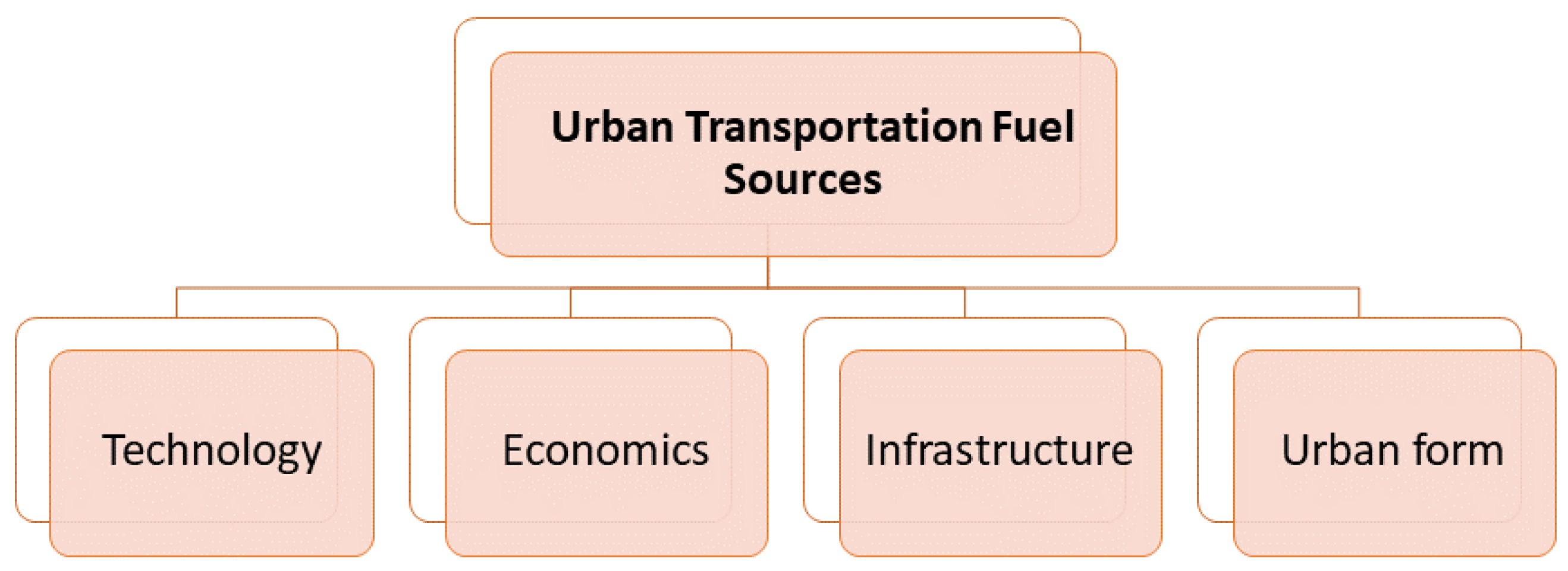
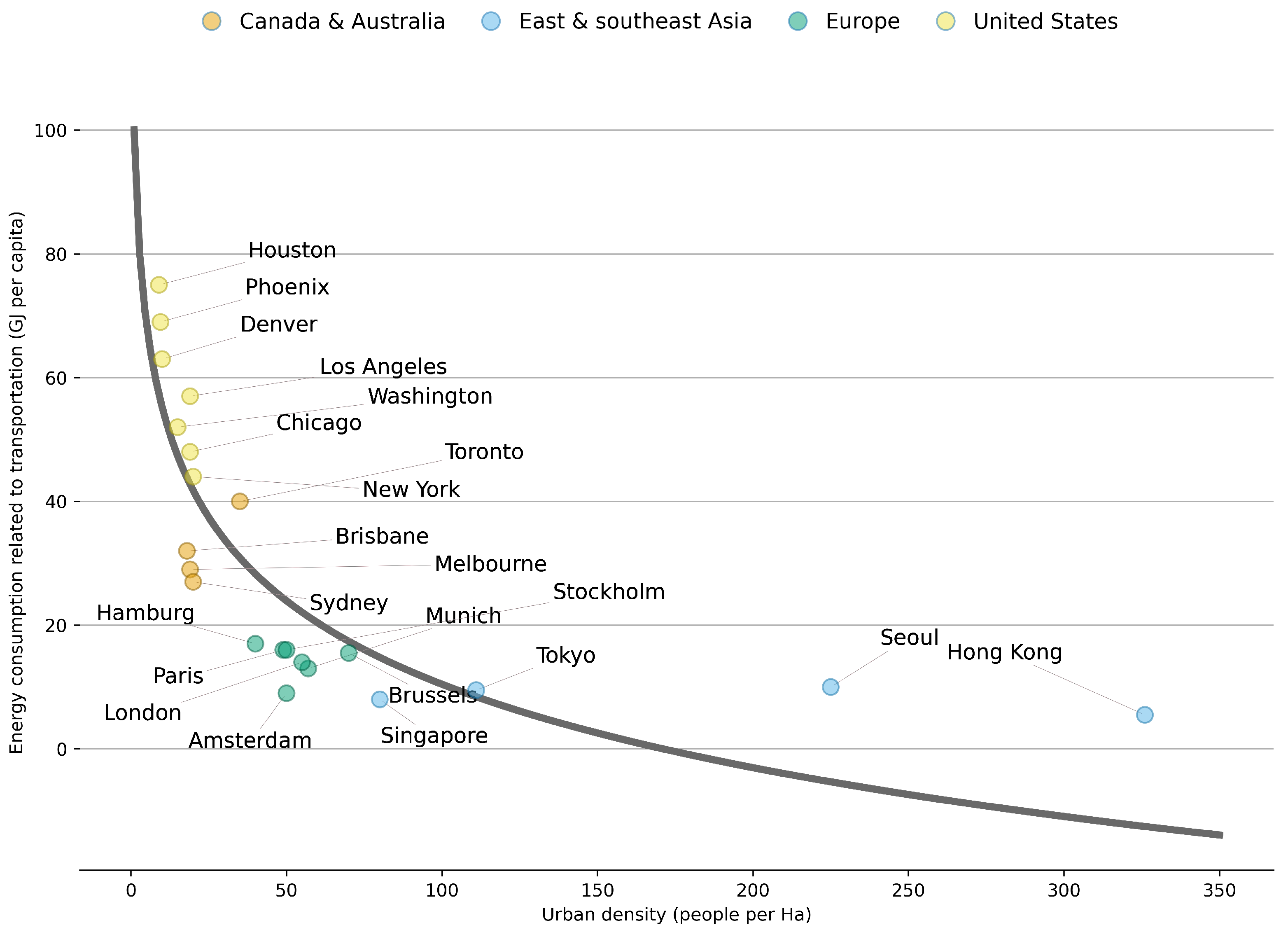

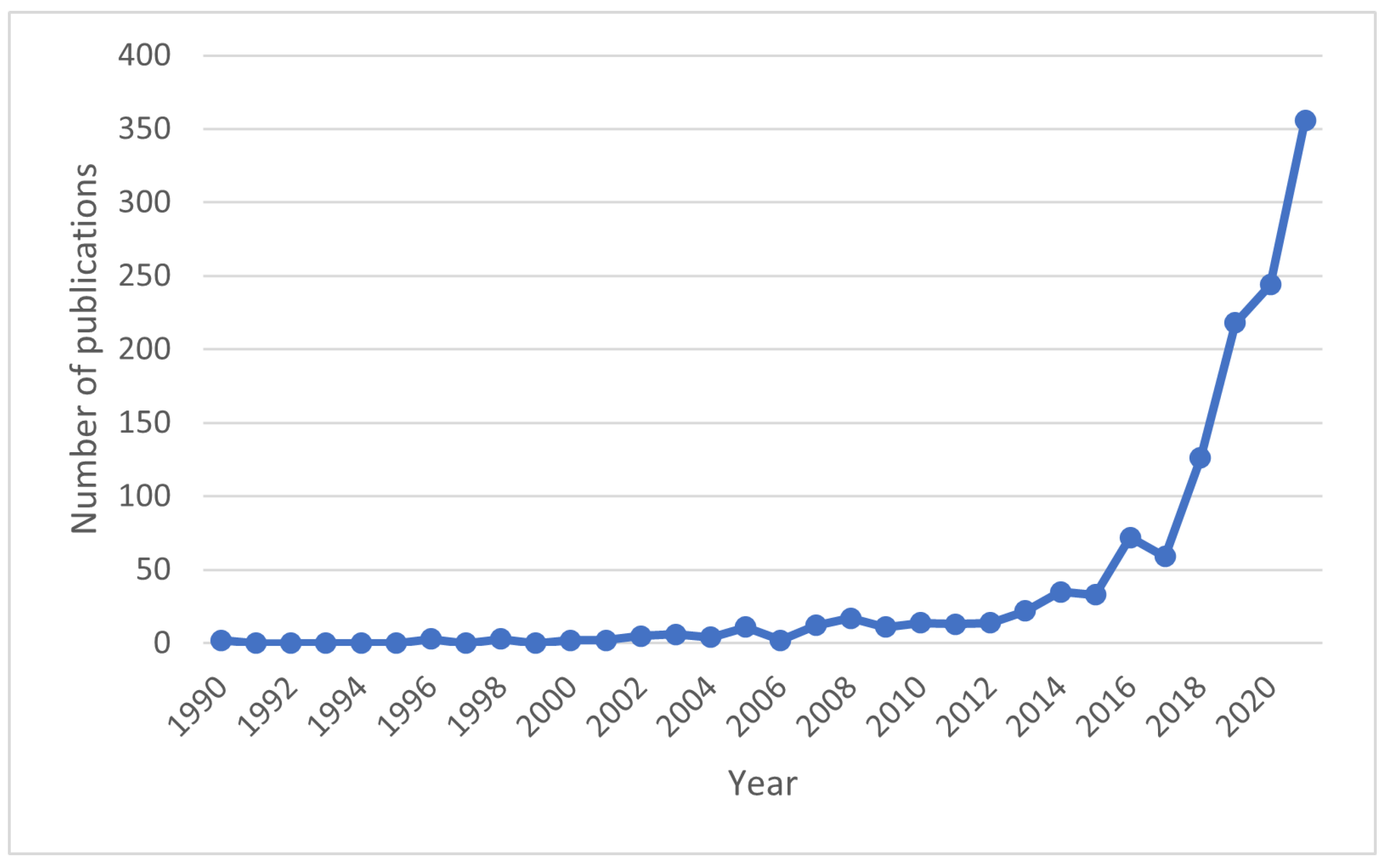
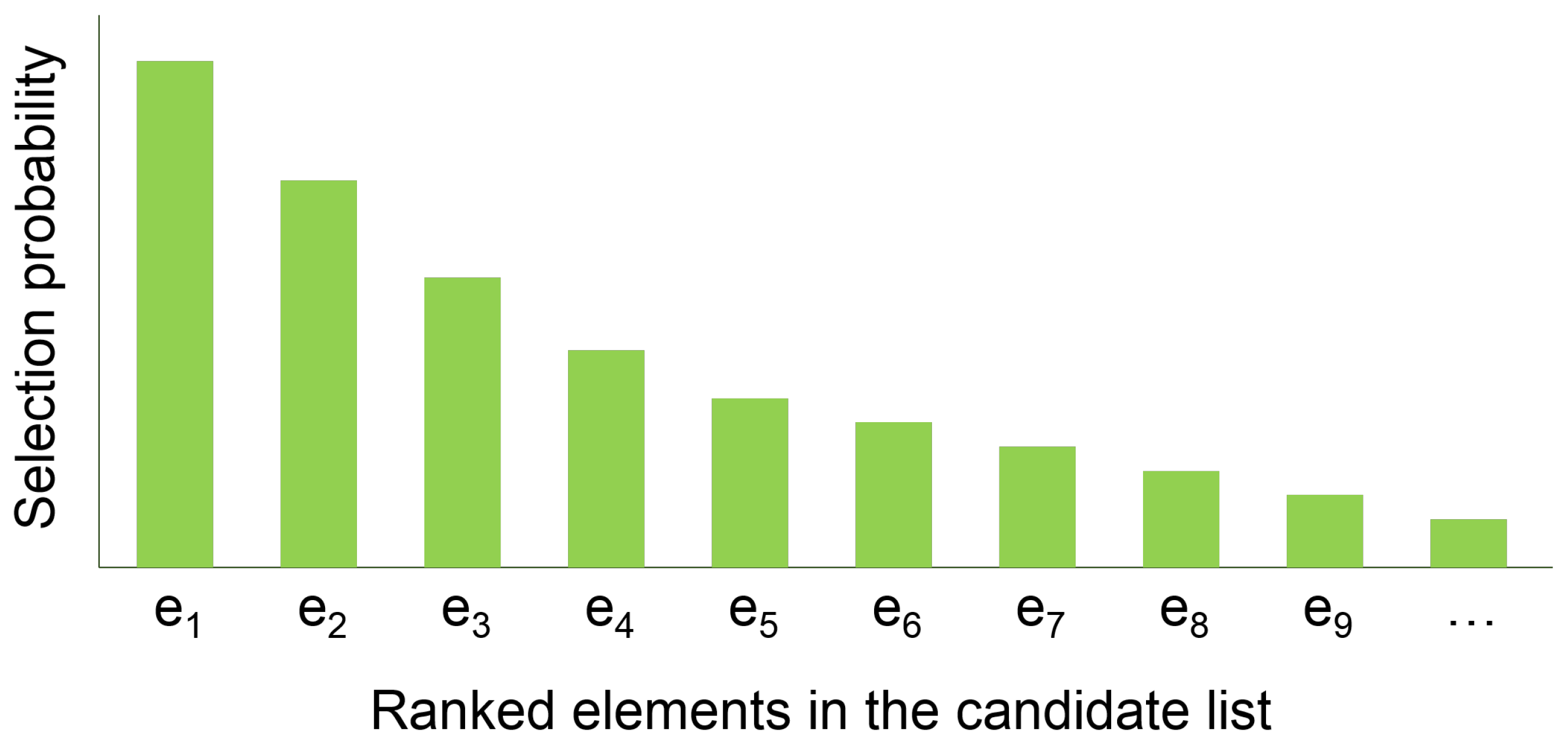

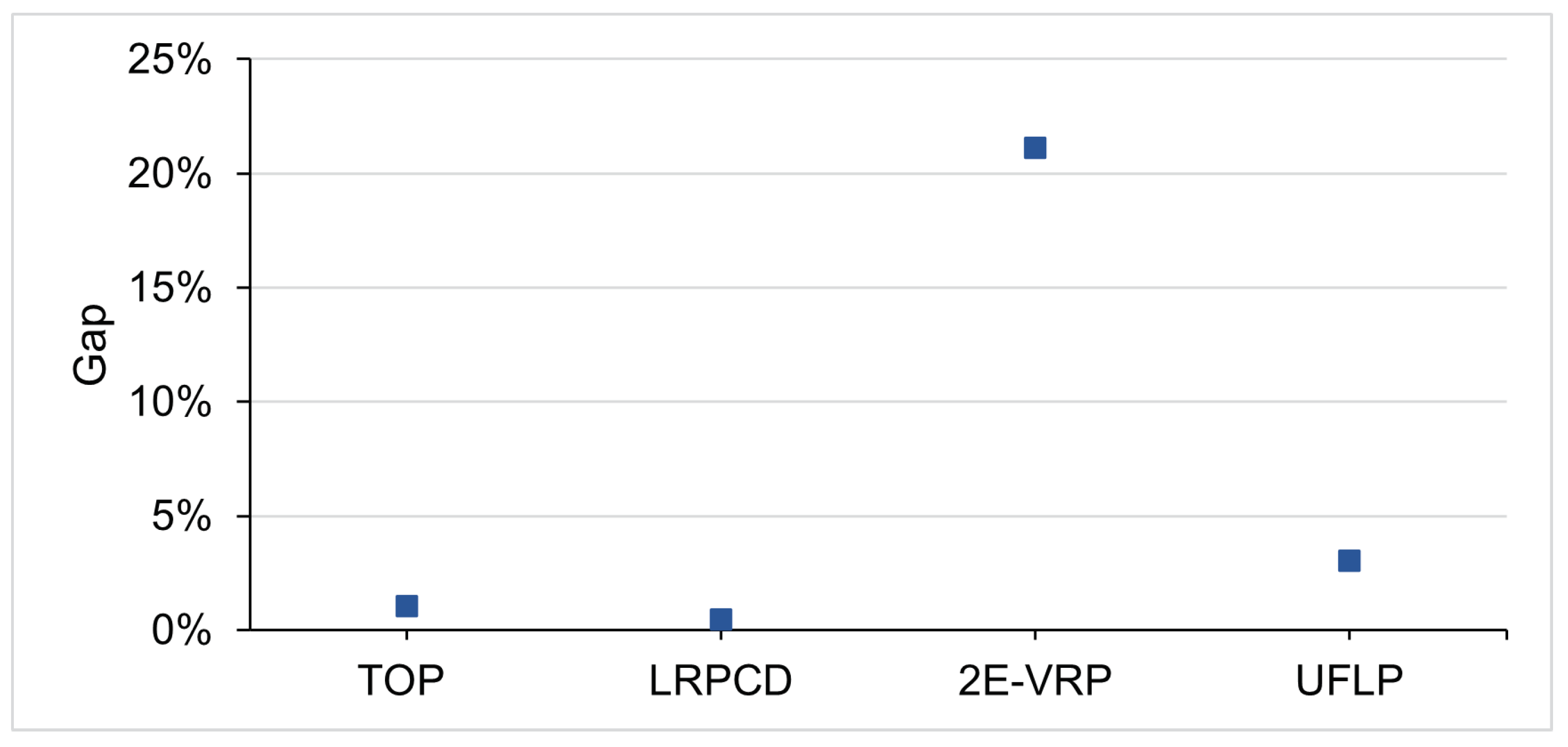
| Paper | Context | Technique | Objective | Advantages |
|---|---|---|---|---|
| Chávez et al. [37] | Multi-depot VRPB. | Ant Colony System. | Minimization of the travel distance, travel time, and total energy consumption. | The proposed algorithm is a novel metaheuristic approach that obtains good results within short computing times. |
| Yang et al. [40] | Building energy optimization. | Parallel Genetic Algorithm. | Reduce computational time of simulation-based building optimization problems. | Lower computational times compared to single GA. |
| Li et al. [41] | Mobile terminal devices. | Fog-cloud cooperation system, Nonlinear programming, SPML. | Balance energy consumption and delay. | Trade-off strategy that can realize optimal energy consumption with a delay threshold. |
| González-Briones et al. [42] | Intelligent Buildings. | Multi-Agent Systems. | Energy consumption optimization. | MASs are going through constant evolution and thanks to their multiple characteristics, they are a very suitable approach to modeling systems in the field of energy optimization. |
| Ejaz et al. [44] | IoT devices in smart cities. | Heuristic, Branch-and-Bound. | Reduce electricity costs, scheduling of dedicated energy sources for IoT device. | Heuristics are efficient algorithms to solve the NP-hard integer programming problem. Branch-and-Bound offer similar results compared to exhaustive search but with less complexity. |
| Lu et al. [45] | Wireless sensor networks. | Dual decomposition, subgradient-based methods. | Maximizing transmission rate performance. | Decomposes the problem into smaller problems. |
| Carli et al. [46] | Street lighting systems. | Quadratic Integer Programming. | Select optimal energy retrofit interventions. | Allows simultaneously reducing energy consumption while ensuring an optimal allocation of the retrofit actions among the various street lighting subsystems. |
| Paper | Context | Technique | Objective |
|---|---|---|---|
| Bruglieri et al. [50] | One-way electric carsharing | Mixed Integer Linear Programming | Three-objective relocation problem |
| Lai et al. [51] | Electric carsharing | Mixed Integer Linear Programming | Optimal routing and charging scheduling |
| Lu et al. [52] | Carsharing | Adaptive Large-Neighborhood Search | Vehicle relocation with operation teams |
| Ma et al. [53] | Shared autonomous electric vehicles | Mixed Integer Nonlinear model, Genetic Algorithm | Locating charging stations, optimizing fleet size and routes |
| Chang et al. [54] | One-way carsharing | Heuristic, Deep learning algorithm | Vehicle relocation and staff rebalancing |
| Reference | Problem | Acronym | BFS | AOS |
|---|---|---|---|---|
| Panadero et al. [82] | Team Orienteering Problem, set 1, maximization | TOP | 126 | 124.69 |
| Almouhanna et al. [83] | Location Routing Problem with a Constrained Distance, Barreto’s set, minimization | LRPCD | 3637.84 | 3655.15 |
| Martins et al. [84] | Two-echelon Vehicle Routing Problem with Pickup and Delivery, tight inventory, minimization | 2E-VRP | 2023.43 | 2450.44 |
| Martins et al. [80] | Uncapacitated Facility Location Problem, minimization | UFLP | 1,200,339 | 1,236,828 |
Publisher’s Note: MDPI stays neutral with regard to jurisdictional claims in published maps and institutional affiliations. |
© 2022 by the authors. Licensee MDPI, Basel, Switzerland. This article is an open access article distributed under the terms and conditions of the Creative Commons Attribution (CC BY) license (https://creativecommons.org/licenses/by/4.0/).
Share and Cite
Ghorbanioskalaei, E.; Herrera, E.M.; Ammouriova, M.; Juan, A.A. On the Use of Agile Optimization for Efficient Energy Consumption in Smart Cities’s Transportation and Mobility. Future Transp. 2022, 2, 868-885. https://doi.org/10.3390/futuretransp2040048
Ghorbanioskalaei E, Herrera EM, Ammouriova M, Juan AA. On the Use of Agile Optimization for Efficient Energy Consumption in Smart Cities’s Transportation and Mobility. Future Transportation. 2022; 2(4):868-885. https://doi.org/10.3390/futuretransp2040048
Chicago/Turabian StyleGhorbanioskalaei, Elnaz, Erika M. Herrera, Majsa Ammouriova, and Angel A. Juan. 2022. "On the Use of Agile Optimization for Efficient Energy Consumption in Smart Cities’s Transportation and Mobility" Future Transportation 2, no. 4: 868-885. https://doi.org/10.3390/futuretransp2040048
APA StyleGhorbanioskalaei, E., Herrera, E. M., Ammouriova, M., & Juan, A. A. (2022). On the Use of Agile Optimization for Efficient Energy Consumption in Smart Cities’s Transportation and Mobility. Future Transportation, 2(4), 868-885. https://doi.org/10.3390/futuretransp2040048







